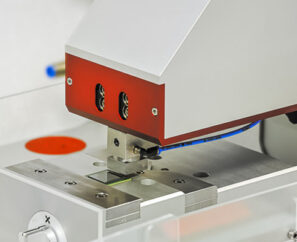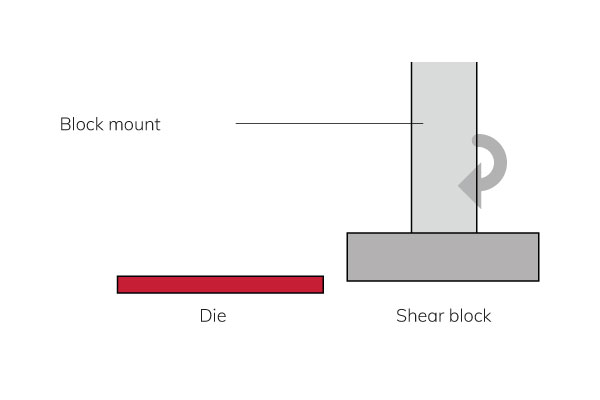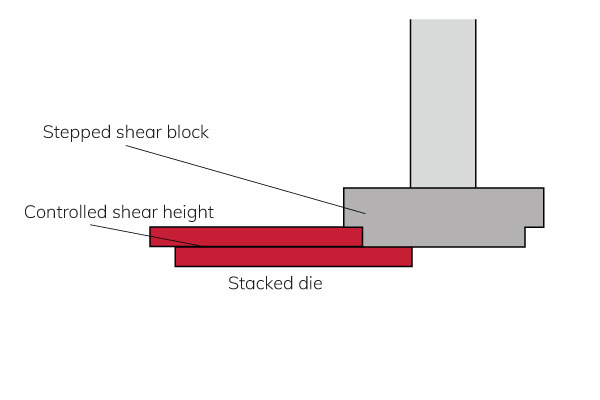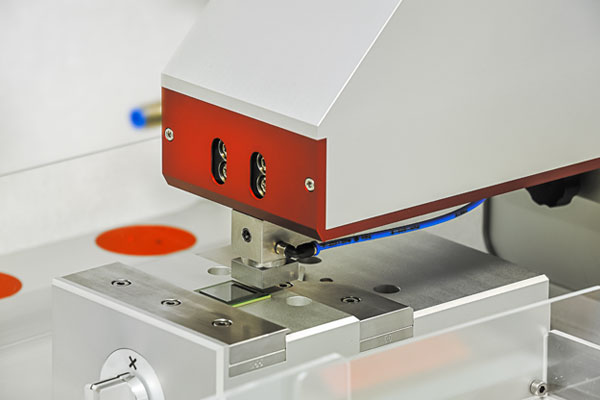Developments in die result in changes to component size and thickness. The latest chip packaging designs require stacked die or silicon-to-silicon bonds that change the shape of components and their bond strength. A conventional shear tool may cause higher stresses at the initial contact point, resulting in early die fracture. But our patented self-aligning shear tool can load all sides evenly as it freely rotates to match the die orientation.
In this newsletter, you can read about our self-aligning shear tool’s tool design, material, and specifications. Hang on for the following newsletter if you want to learn more about performing an optimal shear test because we will share a new how-to guide on shear testing.
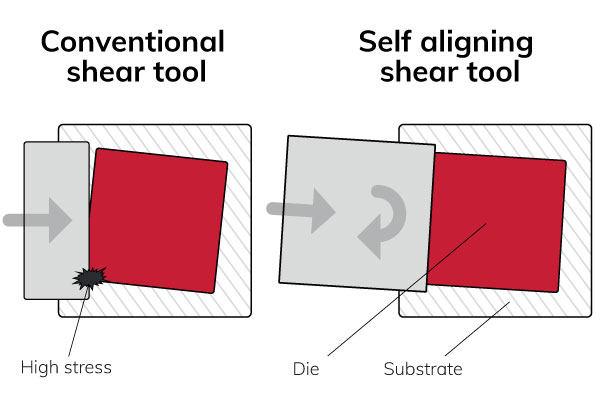
Tool design and material
The tool holds a shear block to contact the die. A vacuum mount holds the shear block in place, and the block can rotate slightly (self-alignment).
Depending on the applications, our experts may recommend a relatively soft shear block material, like aluminum or mild steel. Because it is softer than the die, it deforms at the points of contact, inevitably resulting due to surface irregularities between the edge of the die and the tooltip. This deformation considerably reduces the high contact stresses that otherwise cause the die to fail.
In this application configuration, the tool design is very precise to ensure the most stable positioning of the tool relative to the target. If the tool lifts, it increases the stress concentration on the edge of the die, making die failure likely. This is ideal for testing stacked die, which is very thin and requires precise control of shear height.
Self-aligning shear tool specifications
| Self-aligning shear tool | |
| Maximum shear force (kgf) | 500 |
| Maximum rotation angle of shear tool (°) | ±2 |
| Minimum shear tool dimension w x d (mm) | 20×20 |
| Maximum shear tool dimension w x d (mm) | 35×35 |
| Minimum shear tool height (mm) | 8 |
| Maximum shear tool height (mm) | 10 (customizable) |
| Minimum Die size w x d (mm) | 2 x 2 |
| Maximum Die size w x d (mm) | 35×35 |
| Minimum Die height (mm) | 0,2 |
| Maximum Die height (mm) | 10 |
| Minimum Substrate size w x d (mm) | 2 x 2 |
| Maximum Substrate size w x d (mm) | 100×100 |
| Minimum Substrate height (mm) | 0,2 |
| Maximum Substrate height (mm) | 5 |
| 2 vacuum positions for substrate, one parallel to shear tool, other under an angle of 45° | |
| Material shear tool customizable | |
Soft shear tool
A hard shear tool causes stress concentration at the point of contact. A soft tool can load all sides evenly and deforms to a die surface, reducing stress concentrations. Soft tools typically last for 10 tests, but this depends very much on the application. The parts are low-cost and easy to remove and fit.
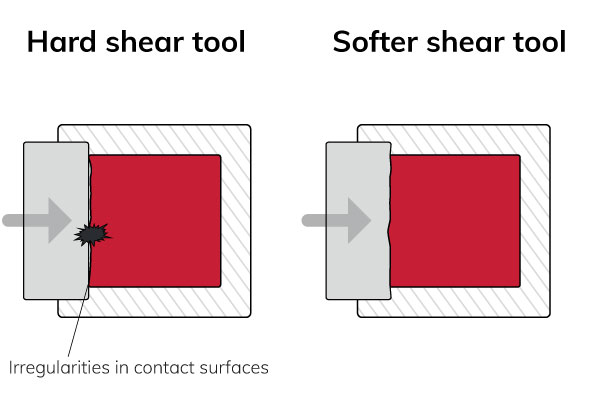
Die shear work holder
We can offer a special die shear work holder to support high shear forces. The work holder offers a protection cap for the operator’s safety, and with special masks, it is possible to test dies from different angles and sizes.
Besides a wide range of standard tools and work holders, we design custom bond testing solutions to fulfill all test requirements. Contact us for more information.
How to shear guide
As forerunners in bond testing, we aim to spread knowledge about bond testing in the industry. A shear test is one of the most common tests to perform on a bond tester. That is why we are writing a new ‘How to’ guide on shear testing for of next newsletter. Stay tuned and learn how to perform an optimal shear test on balls, copper pillar, dies, and wedges.

